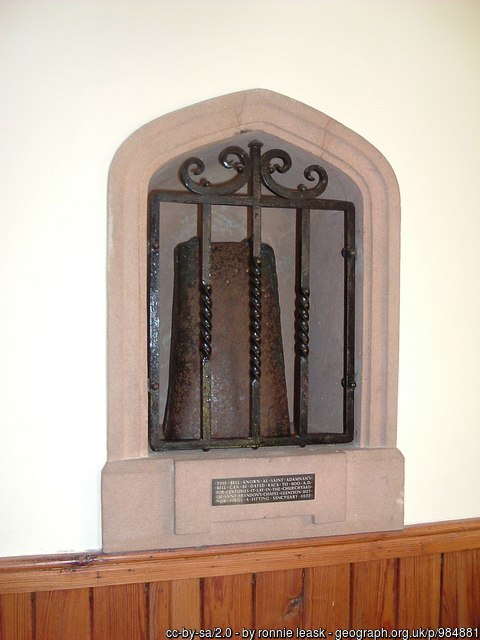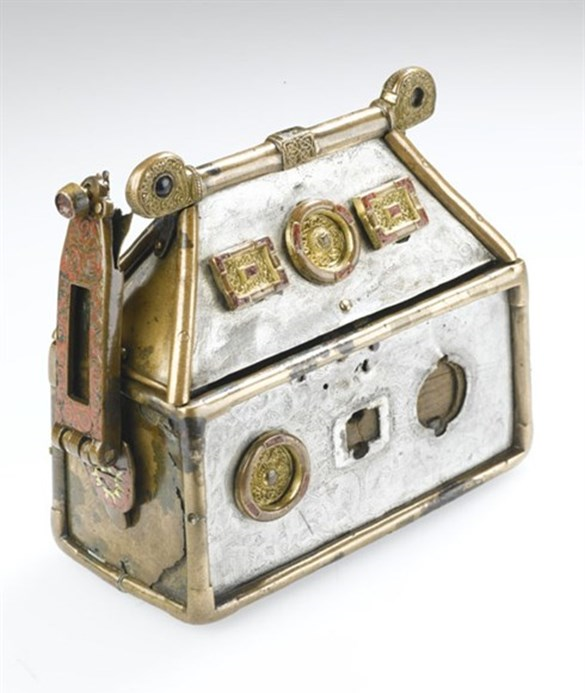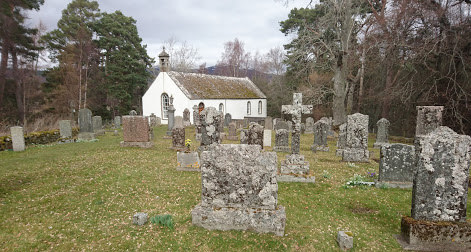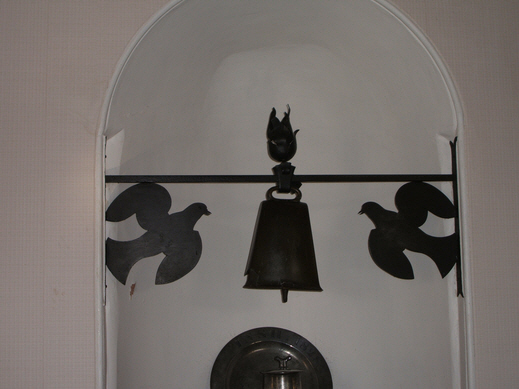St Adamnán of Iona
St Adamnán's fame is due very much to the fact that he was Colm Cille's biograper but we should take note that he was, himself, a major player on the field of missionary activities in the north east of Scotland.
He was born in or about 624AD in what is now the barony of Tirhugh in the county of Donegal. He was noted for his learning, humility, and knowledge of the Scriptures. In 694AD, he was elected ninth abb of Iona. He is known to have travelled widely including at least one visit to the court of the Northumbrian King, Aldfrith, in 701AD. He fell out of favour with his own community on Iona since he was ready to adopt the Roman usages regarding the date of Easter and the tonsure. Consequently, he spent some time away from the island community on Hy (Iona). He returned to the community in 704AD and died on the 23rd September of that year. He is said to have been buried in Iona, but his relics were afterwards removed to Ireland, it is said to Donoghmoyne, in the district of Farney in Ulster, but they are believed to have been carried off by the Northmen in 830AD. There was a very ancient muinntir at Donoghmoyne founded by St Patrick and I believe that this is where St Adamnán's relics would have been taken.
There are dedications to Adamnán in a number of locations. One of the most picturesque is the church beside Loch Inch in Invernesshire. Local tradition also says that the saint was specially connected with the district of Glenlyon in Perthshire and some sources say that he died here, being buried at Dull near the Tay where he had founded a monastic church which bore his name. The church of Kineff in the Mearns, where the Regalia of Scotland were once hidden, is dedicated to him. There are other dedications in the north-east at Forvie, Leask, Aboyne and Forglen.

Above: St Adamnán's Bell, Innerwick Church, Perthshire. © Ronnie Leask
Adamnán is inextricably linked with the famous reliquary known as the Brecbennach (or Monymusk Reliquary) which is now in the National Museums of Scotland in Edinburgh and which is supposed to have contained some of the remains of Colm Cille. The lands connected with the Dewar (keeper) of the Brecbennoch were in Forglen parish and it is interesting to find both Adamnán and Colm Cille associated together there.

Above: The Monymusk Reliquary © National Museums of Scotland
Perhaps the most evocative of the churches associated with St Adamnán is that beside the Loch of Insch just south of Aviemore. The church sits on a mound called Tom Eunan (Tom Eódhnain - "St Adamnán's Mound") at the side the wonderfully scenic loch. Just offshore from the church is a small island that some say was a fortification of one of the Pictish kings. In 1883, the Rev Reid1 noted the occurrence of a fair called Feil Columcelle in the parish underlining an ancient link with Iona. The parish lies entirely on the south side of the River Spey but stretches far back into the mountains of western Glen Feshie and upper Glen Tromie. Although a vast area, there is no record of any dependent chapels in the parish which is, perhaps, a reflection of the scarcity of inhabitants in ancient times. The church of Insh is one of the most primitive in the country and its location makes it an ideal reminder of a great Saint of the Early Church.

Above: The present Church of Insh.© Geoff White

Above: This ancient Bronze Bell reputedly once belonged to St Adamnán.
References.
- 1 Reid, W. (1883) Grantown and the Adjacent Country: A Guide to Strathspey. Grantown: Stuart.
small(transp).png)